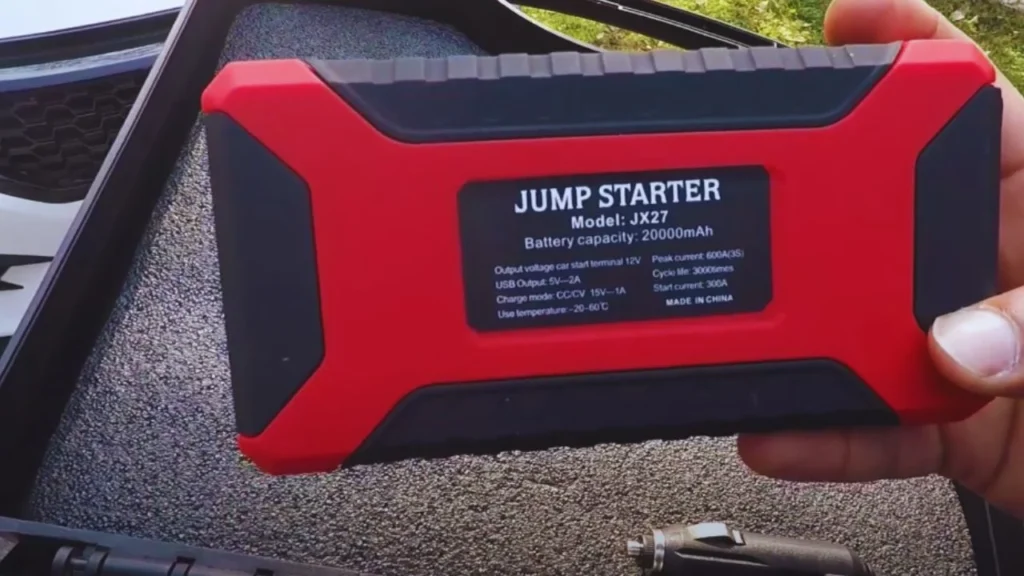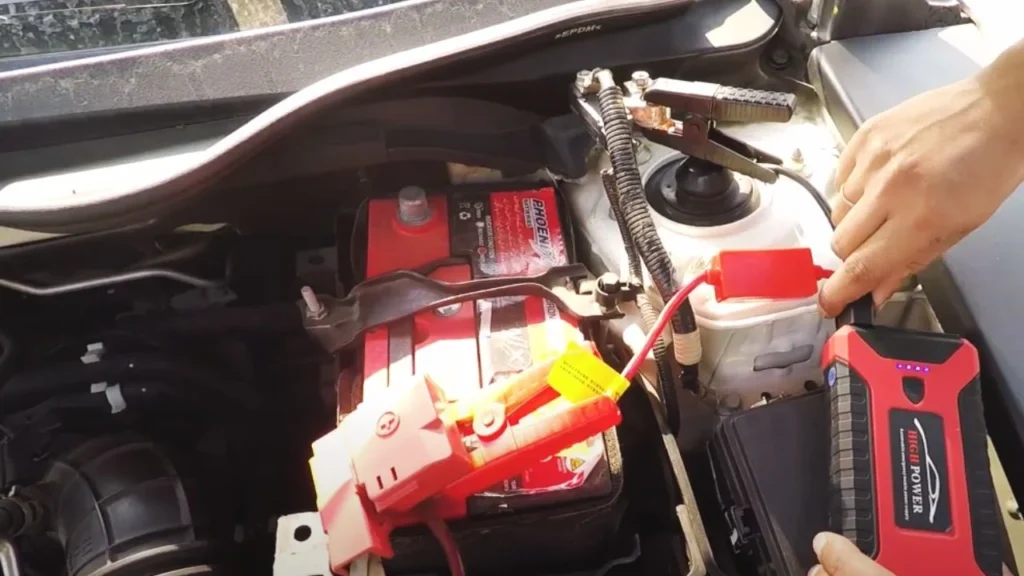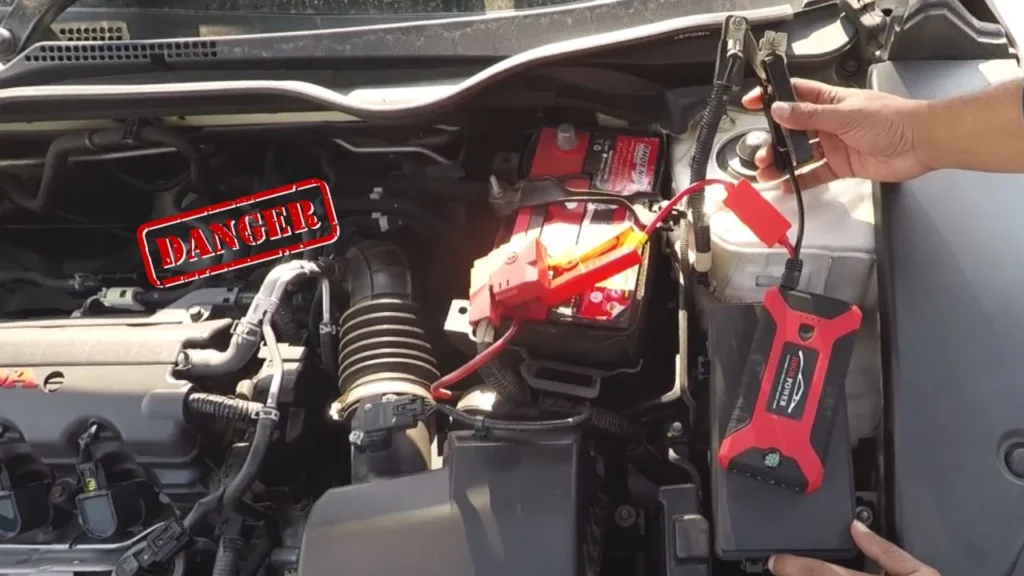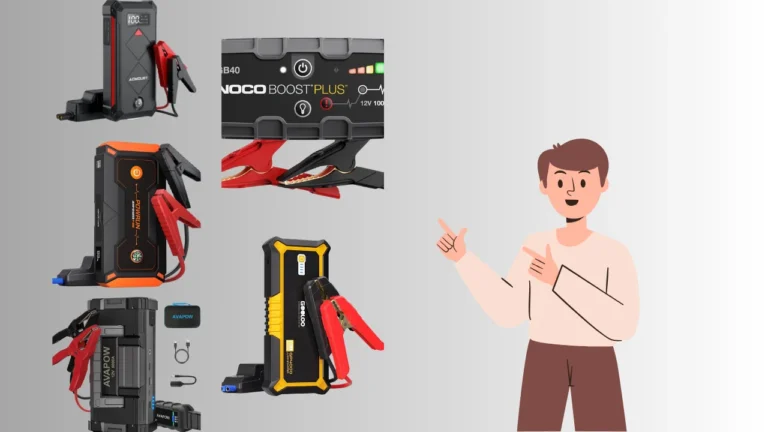When it comes to vehicle maintenance, few scenarios are as frustrating as a dead battery. A jump starter often becomes a savior in these situations, offering a portable, easy-to-use solution that can bring your vehicle back to life without the need for another car or extensive tools. However, a common question that arises is “can you use a jump starter while plugged in?”.
The answer is not as straightforward as it seems and depends on several technical and safety considerations. Explore whether it is bad to keep jump-starting your car battery, including the long-term effects it may have on your vehicle’s performance.
What is the Functionality of a Jump Starter?
Before addressing whether you can use a jump starter while plugged in, it’s essential to understand its primary function. A jump starter is essentially a portable power pack that provides the necessary electricity to crank your engine when the car’s battery has failed.

It does this by delivering a short but powerful burst of energy, enough to start the engine, after which the vehicle’s alternator takes over, recharging the battery while the car is running.
Jump starters are typically designed with either lithium-ion or lead-acid batteries. These devices store electricity, and when their clamps are attached to the car battery terminals, they transfer the stored energy to your car’s dead battery.
Most modern jump starters come with built-in safety features, such as overload protection, reverse polarity alerts, and short circuit prevention, which help ensure a safer operation.
However, these features are only effective if the device is used correctly, as intended by the manufacturer. Learn how to safely jump-start a box truck with this guide on jump-starting a box truck, covering essential tools and step-by-step instructions.
Can You Use a Jump Starter While Plugged In?
So, can you use a jump starter while plugged in? No, you should not use a jump starter while it’s plugged into an external power source. Here’s why:
Jump starters are designed to operate independently of external power once they are fully charged. They store energy within their internal batteries, which is then used to jump-start a vehicle.
Why Not Use Jump Starter While It’s Plugged In?
When you attempt to use a jump starter while it’s plugged into a wall outlet or any other power source, you’re introducing two simultaneous electrical currents — one coming from the wall socket (AC) and another coming from the jump starter (DC).

Discover the steps for jump-starting a Mini Cooper efficiently and avoid damaging your car’s sensitive electronics. This can cause multiple issues, including:
- Overloading the jump starter: Jump starters are designed to deliver a burst of power and then gradually recharge when not in use. When plugged into a power source while also delivering power to your car, it can create a conflict between charging and discharging, potentially leading to overheating or even damaging the internal battery.
- Fire and explosion risks: Mixing two electrical currents can result in a short circuit. Jump starters often contain high-capacity batteries, and if a short circuit occurs, it could overheat the device, posing a fire or explosion hazard.
- Damage to your vehicle: In addition to damaging the jump starter itself, using it while plugged in can also harm your car’s electrical system. The car battery operates on DC power, and introducing an external AC power source could interfere with the sensitive electronics in modern vehicles, potentially causing costly damage.
Why Is This Practice Dangerous?
The core issue with using a jump starter while plugged in stems from how the device is designed to handle electrical current. Jump starters are built to operate on DC power, matching the requirements of a car battery.

When plugged into a wall outlet, the jump starter draws AC power, which conflicts with the vehicle’s DC system. Understand the process and precautions when jump-starting a 24V system with a 12V battery to prevent system overloads.
Here are some specific risks associated with this practice:
- Conflicting currents: Vehicle batteries operate on 12V DC, while a wall outlet provides 110V-240V AC (depending on your country). These two currents are incompatible, and attempting to jump-start a car while the jump starter is plugged into an AC source can overload the battery, spark a short circuit, or cause the jump starter to malfunction.
- Overcharging the battery: If a jump starter remains connected to the car after the engine starts, the alternator begins to charge the car battery, and leaving the jump starter connected may lead to overcharging, which can cause the battery to overheat. This increases the risk of damaging the battery or, worse, causing a fire.
- Increased risk of electric shock: When working with electrical systems, especially in damp or unsafe conditions, plugging in a jump starter and using it simultaneously can increase the chance of electric shock. Many jump starters, when plugged into the wall, do not feature the same protection as when they are running on their internal batteries.
Manufacturer Recommendations
Most manufacturers of portable jump starters explicitly warn against using the device while it’s plugged in. These devices are designed to be fully charged before use and then disconnected from any power source before attempting to jump-start a vehicle. Charging your jump starter while attempting to use it at the same time violates the device’s design and could lead to voiding the warranty.

Manufacturers also recommend periodically charging the jump starter to ensure it maintains optimal performance. This ensures that the device is always ready for emergency situations without the need for simultaneous charging during use.
The general advice is to charge the jump starter after each use and at least once every three to six months if it hasn’t been used, to ensure the internal battery remains healthy. Explore the best portable marine battery jump starters for reliable performance when you’re out on the water.
Best Practices for Jump Starting
If you need to jump-start your car, it’s essential to follow the best practices for safe and effective use:
- Ensure the jump starter is fully charged: Before you begin, make sure that the jump starter is adequately charged. This guarantees that it has enough power to start the vehicle’s engine without needing to be plugged in.
- Turn off all electrical devices in the vehicle: Before jump-starting, turn off any electrical components such as the radio, headlights, and air conditioning. This reduces the overall power demand on the jump starter and helps the vehicle start more easily.
- Connect the cables correctly: Attach the red (positive) clamp to the positive terminal of the dead battery, and the black (negative) clamp to a grounded metal part of the vehicle, such as the engine block. Ensure that the clamps are securely attached and not touching each other.
- Start the car and disconnect the jump starter: Once the car has successfully started, promptly disconnect the jump starter to avoid overloading the device. Allow the vehicle to run for at least 15 minutes to ensure the alternator fully charges the car’s battery.
- Charge your jump starter after use: After jump-starting your vehicle, remember to recharge the jump starter fully to ensure it’s ready for the next emergency.
Find out which portable car jump starter with air compressor is perfect for emergency roadside assistance.
Alternatives to Using a Jump Starter While Plugged In
If you find yourself in a situation where your jump starter isn’t charged or if you need to boost your car battery more safely, consider these alternatives:
- Traditional jump-start using another vehicle: If you have jumper cables and access to another vehicle, this method is a tried-and-true way to start your car. The process involves connecting the cables to both batteries in the correct order to transfer power from the functioning battery to the dead one.
- Portable battery chargers: These devices are designed to gradually recharge a dead battery over several hours, making them a safer option than using a jump starter while plugged in. Many portable battery chargers can be left connected to the car overnight, allowing a slow, steady charge.
- Calling for roadside assistance: If neither your jump starter nor a traditional jump-start from another vehicle is feasible, roadside assistance services are another reliable alternative. These professionals are equipped with the proper tools and experience to safely and efficiently handle your dead battery without risking damage to your vehicle or your jump starter. In some cases, they may even be able to bring a replacement battery if needed.
- Battery maintenance and monitoring devices: Another useful tool is a battery maintainer or trickle charger. These devices are designed to keep your battery charged over long periods, making them ideal for cars that aren’t driven regularly. Battery maintainers provide a low-level charge that keeps the battery topped off without overcharging, which can extend the battery’s lifespan and reduce the risk of finding yourself with a dead battery in the first place.
Common Myths about Using Jump Starters
There are a few myths surrounding jump starters and their usage, particularly when it comes to whether they can be used while plugged in. Let’s debunk some of the most common misconceptions:
- Myth 1: You can charge your car battery by leaving the jump starter connected after starting the engine: This is not true. Once the engine is running, the alternator takes over the responsibility of charging the car battery. The jump starter’s role is solely to provide the initial burst of power needed to start the engine. Leaving it connected can lead to overloading and overheating of the jump starter, but it won’t charge your car battery.
- Myth 2: Using a jump starter while plugged into a wall outlet will boost its power: On the contrary, this practice can cause a conflict between the alternating current (AC) from the wall outlet and the direct current (DC) from the car battery, leading to potential damage to both the vehicle and the jump starter. Portable jump starters are designed to function independently, without any external power supply.
- Myth 3: It’s okay to leave the jump starter connected after the vehicle has started: As mentioned before, this is false. Once the engine is running, leaving the jump starter connected not only serves no purpose but can also damage both the jump starter and the car’s electrical system due to the alternator’s charging process.
Wrapping Up:
In summary, using a jump starter while plugged into an external power source is not recommended. Doing so can cause significant damage to both the jump starter and your vehicle’s electrical system, increase the risk of electrical hazards, and even lead to fire or explosion.
Instead, always ensure that your jump starter is fully charged before use and follow the manufacturer’s instructions for safe operation. Hope so, now you know your answer to: Can you use a jump starter while plugged in?
This comprehensive guide on using a jump starter to charge a dead battery explains whether it’s possible and what to watch out for.
Ali is a tech enthusiast and automotive aficionado, passionate about sharing insights on the latest innovations and industry trends.





